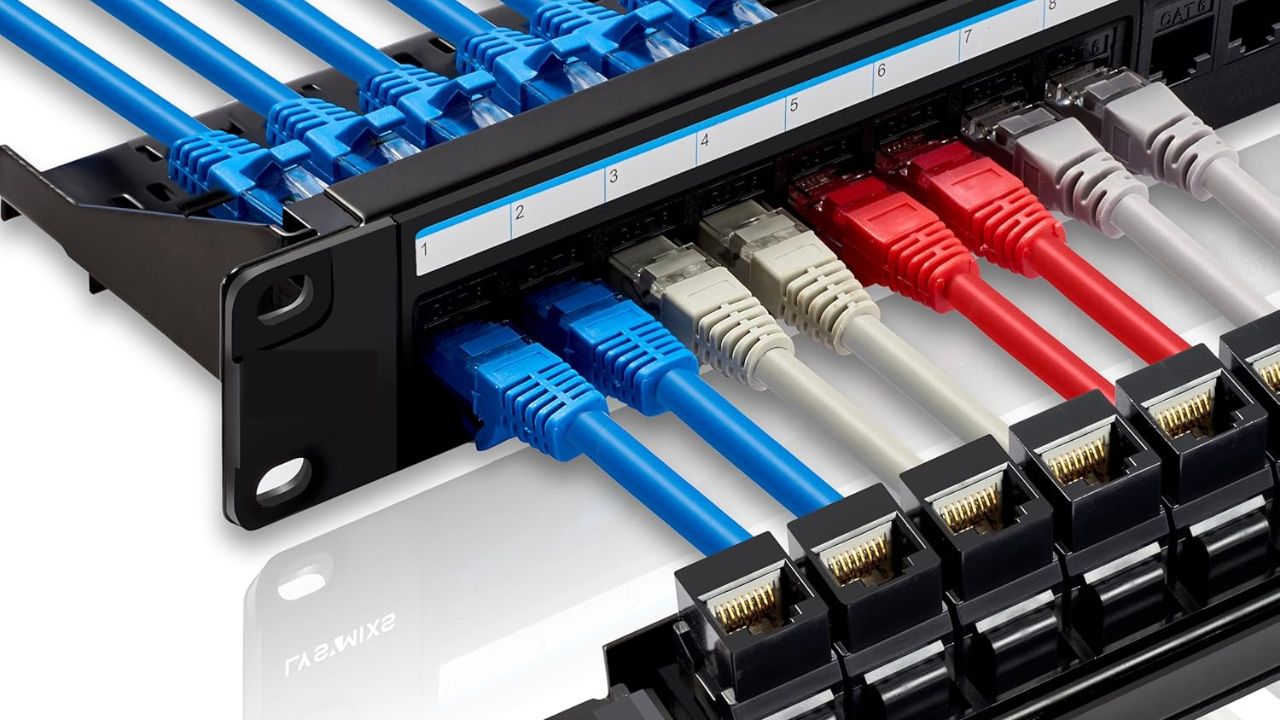Frida is a woman with a love of all things technological and decorative. She spends her days finding new ways to merge the two worlds together, and has made a name for herself in the process. Her work has caught the eye of many in the tech industry, and she is often consulted for her expertise. Darlene also enjoys spending time with her family and friends, and loves to decorate her home in her free time.

Any efficient IT environment depends on a well-organized network infrastructure during today’s fast-moving digital period. The implementation of structured cabling solutions remains essential for maintaining both connectivity and performance and scalability in data centers and office buildings. The core component of network infrastructure setup stands out as patch panels because they provide essential organization and reliability to network systems. The value of patch panels in structured cabling systems exceeds all expectations. This is because they enhance both the physical framework and operational reliability of network systems. Patch Panel Manufacturers are crucial in delivering reliable and scalable network infrastructure solutions for modern data centers and commercial facilities.
What is a Patch Panel?
A mounted hardware assembly called a patch panel contains multiple ports, which serve as points for managing incoming and outgoing LAN cable connections. Network switches and routers connect to these devices, which reside in server racks or cabinets for network equipment interface. The network configuration can be easily modified through patch panels because these devices create centralized points for cable organization and redirection. These networking components exist in different configurations, which include Cat.5e, Cat.6, Cat.6A, and Cat.7 to support multiple data transmission standards and environmental requirements.
The Importance of Organization in Network Design
The visual clutter created by disorganized cable arrangements turns into a dangerous problem during network maintenance operations, system upgrade processes, and fault detection procedures. A lack of a structured method makes it difficult for technicians to locate cables or track connections or solve problems, which leads to prolonged system outages and decreased operational performance. The structured and labeled design of patch panels provides an effective solution to this issue. The practice of dividing cables into specific segments followed by panel-based organization makes network management simpler.
The designated switches and routers receive their cables from different devices, including computers, servers, and telecommunication hardware, through the use of patch panels. The organized arrangement of components through patch panels decreases equipment disconnection risks while reducing clutter and improving cabinet ventilation to extend the device lifespan.
Enhanced Troubleshooting and Maintenance
The main advantage of using patch panels is their ability to simplify network troubleshooting operations and maintenance procedures. Network problems require fast identification and isolation of their sources to resolve them effectively. The structured cable interface of patch panels enables clear identification of labeled cables, which simplifies the process of detecting hardware failures and faulty connections.
The centralized cable termination point at the patch panel protects main switch ports from damage that occurs during regular cable insertions and removals. The centralization of cables at a patch panel protects network equipment from damage and extends its operational life. The network remains operational without major disruptions because technicians can easily perform maintenance tasks at the patch panel.
Flexibility and Scalability
Today’s businesses need flexible networks that accommodate evolving business needs. Network connection management reaches its peak flexibility through the implementation of patch panels. The addition or relocation of new devices becomes simple at the patch panel because technicians can perform changes without moving extensive cable lengths. The modular system design cuts down maintenance time and minimizes operational expenses.
The implementation of patch panels enables businesses to expand their network capacity. Business expansion becomes achievable through patch panels because these devices allow new device and port additions without interrupting ongoing network operations. Businesses can choose from different port capacities ranging from 24-port to 48-port in patch panels to find appropriate infrastructure expansion options.
Cost Efficiency Over Time
The long-term advantages of using a patch panel system exceed the initial costs and installation requirements that must be paid during setup. Network equipment protection, faster system maintenance, and quicker upgrade processes lead to lower operational expenses. The organized nature of cabling systems enhances the resale value of IT infrastructure while making audits and inspections simpler for regulated industries that require such inspections.
A Key Component in Data Centers and Beyond
The large-scale nature of data centers makes patch panels absolutely necessary for proper functionality. The large number of networking cables requires precise organization so that patch panels can be executed efficiently. Structured cabling systems find their most valuable application in medium-sized office environments and educational facilities, as well as hospitals and industrial facilities, while supporting telephony and internet access and security systems.
The diverse range of UTP blank patch panels with back bars and FTP panels for shielded applications provides networking solutions for every specific requirement. Rack space conservation and better cable management result from angled panels, which direct patch cords into less congested areas.
Conclusion
The role of patch panels extends beyond their basic appearance as networking hardware because they play a vital part in developing organized network environments with scalable capabilities and serviceability. Structured cabling systems depend on patch panels to serve as their central nervous system, which establishes order out of network disorder. Network demands that increase in complexity will drive up the necessity for patch panels to sustain organized, efficient, and high-performance infrastructures.
